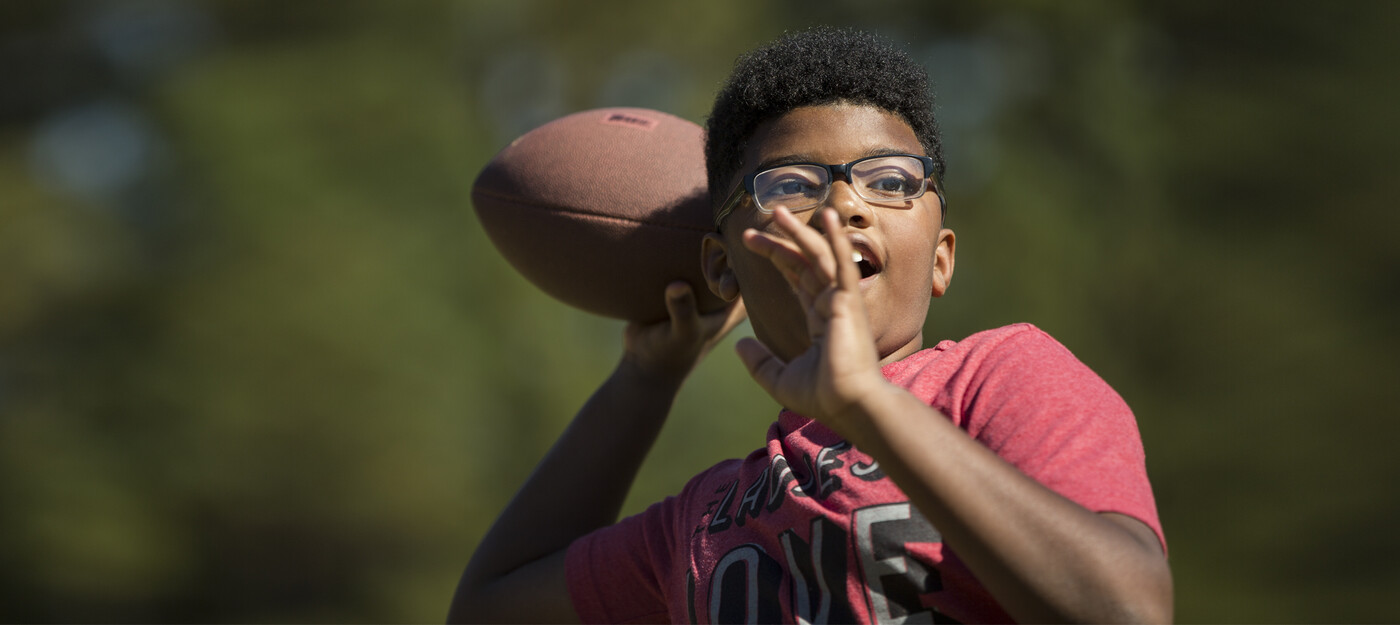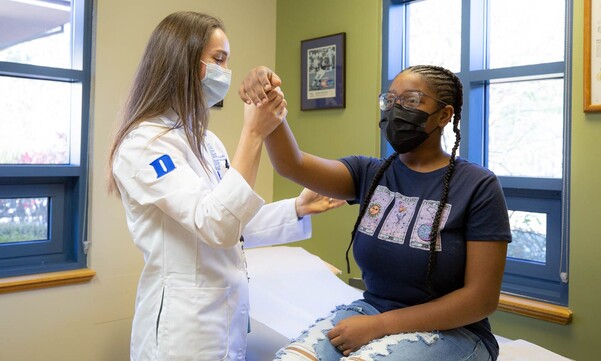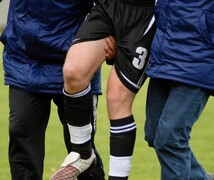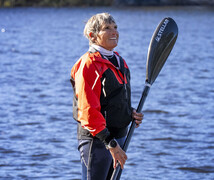When Haji White Jr tore his ACL, a pediatric orthopaedic specialist at Duke used growth-sparing surgery to get him safely back to playing sports.
A Torn ACL at Age 8
Haji wants to be a pro running back someday -- for the Seattle Seahawks, to be exact.
The Lynchburg, VA, fourth-grader has been “playing soccer since he was three, and then he moved on up to football when he was four,” said Haji’s mom, Chrissette Brooks. “Football was pretty much his go-to sport, up until his injury.”
That was in August 2015. It was the first play of the game. “I was running the ball, I got pushed out of bounds, and my knee twisted,” he said. “It was really painful.”
Haji had a torn ACL, or anterior cruciate ligament. The ACL is one of the major ligaments in the knee that hold the bones together. ACL tears are among the most common knee injuries. People who play sports that involve quick turns, pivots, or stops are most at risk. If the tear is complete, it may require surgery, especially if you plan to return to competitive sports.
Child ACL Surgery Techniques Protect Growth
As Haji’s family soon learned, there are few orthopaedic surgeons in the Southeast with the expertise to repair a torn ACL on a child Haji’s age. They were referred to Duke, where pediatric orthopaedic surgeon Dr. Jonathan Riboh, MD focuses on children’s sports medicine.
“The majority of the ACL tears we see are in high school-level athletes and upward,” said Dr. Riboh. “But there’s a pretty significant trend toward an increase in ACL injuries in kids even as young as Haji.”
While ACL repair in adults is a common orthopaedic surgery, the same technique can’t simply be used in children. “Typically, ACL reconstruction in an adult involves drilling holes through the shin and thigh bones,” Dr. Riboh said. “But those holes go through exactly where your growth plates are when you’re a kid.” Growth plates are areas of growing tissue at the ends of children’s long bones. They enable bones to grow to their adult length and shape.
“Normal ACL surgery can compromise a child’s ability to grow,” Dr. Riboh said. “It can also cause deformity if one side of the leg grows faster than the other. You can end up with a kid with a short leg or a crooked leg.”
Dr. Riboh uses pediatric ACL surgery techniques that avoid drilling through the growth plate by either drilling around it or not drilling holes at all. Dr. Riboh didn’t drill any holes in Haji’s knee. Instead, he used connective tissue (called the iliotibial band, or IT band) from the outside of Haji’s thigh and shaped it into a new ACL. “This approach has the lowest risk of causing a growth disturbance,” he said, adding that it has been used for more than 20 years with good results.
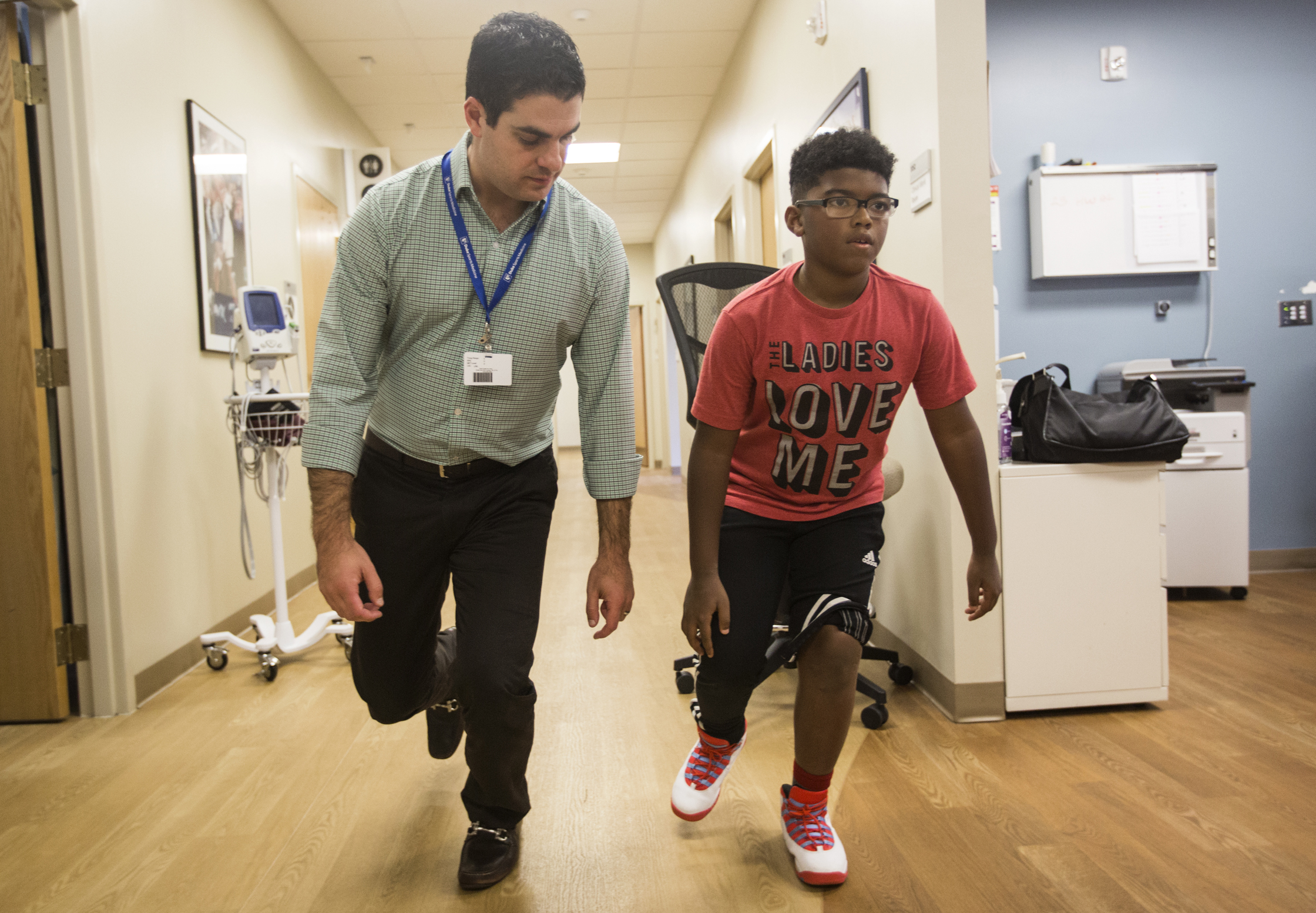
Longer Rehab Can Reduce Risk of ACL Re-Injury
Following ACL surgery, Haji went to physical therapy. That period of rehab -- when sports are off-limits -- can be difficult for child and adolescent athletes. “It crushes them, because you basically tell them they can’t do anything fun for a long time,” Dr. Riboh said. “I tell them they should see it as a time to focus on their cardio training, their strength training, their endurance, their agility. A lot of people come back stronger because they’ve learned a lot about their bodies.”
Haji’s injury kept him out for the rest of the 2015 football season. His parents sat him out for 2016, too. It’s a decision Dr. Riboh supports. “If you’re under 18, have ACL reconstruction, and go back to playing sports, your chance of having another ACL tear -- to either knee -- is 20% to 30%,” he said. He added that waiting longer to return to sports can reduce those chances. While the optimal amount of rehab time depends on the child, Dr. Riboh said it’s generally 9 to 12 months.
Today, Haji says his knee feels good. He’ll start playing basketball soon; he plans to return to football next year. To make sure his leg continues to grow normally, Haji will have annual X-rays. In the meantime, his family is grateful for the care he received from Dr. Riboh and his team at Duke. “I felt a lot better, knowing that Dr. Riboh’s a specialist in pediatric ACL repair,” Brooks said. “He said he would treat him like he was his own.”

